Meeting: December 19, 2023
|
The 19th Century
Undergrown Railroad is a phenomenon of
which most people have some awareness. Few are
aware of the long existing Reverse Undergrown
Railroad, the black market network of human
traffickers and slave traders who stole away
thousands of legally free African Americans from
their families in order to fuel slavery’s rapid
expansion in the decades before the Civil War.
University of Maryland Prof Richard Bell has
revealed the true story of five youths who
suffered at the hands of kidnappers in his book
Stolen: Five Free Boys Kidnapped into Slavery
and Their Astonishing Odyssey Home
(Simon & Schuster-2019)
1825 Philadelphia, saw five young, free Black
boys fall into the clutches of the most fearsome
gang of kidnappers and slavers in the United
States. Lured onto a small ship with the promise
of food and pay, they are instead met with
blindfolds, ropes, and knives. Over four long
months, their kidnappers drive them overland
into the Cotton Kingdom of Mississippi to be
sold into slavery. Determined to resist, the
boys form a tight brotherhood as they struggle
to free themselves and find their way home.
Join the Baltimore Civil War Roundtable on
Tuesday, December
19, 2023, at 7:30 p.m. as Prof. Bell delves into
the journeys of these young men. Due to an
unforeseen scheduling error, the program will be
virtual only. Register for the Zoom at: https://us02web.zoom.us/meeting/register/tZMlf-Cqqz0rEtQHbZklgW3jrqQhoy0ACrAE
Richard Bell received his PhD from Harvard
University and his BA from the University of
Cambridge. His research interests focus on
American history between 1750 and 1877 and he
welcomes enquiries from graduate students
working in this period.
In addition to
Stolen,
Bell has also published two other books. The
first, a monograph titled
We Shall Be No More: Suicide and Self-Government
in the Newly United States,
examines the role that discourse regarding
self-destruction played in the cultural
formation of the early republic. The second
work,
Buried Lives: Incarcerated in Early America,
a co-edited volume of essays centered on the
experience of incarcerated subjects and citizens
in early America, is the product of a conference
organized at the McNeil Center. He is also the
author of a dozen book chapters and journal
articles.
Bell is presently an Andrew Carnegie Fellow
(2021-2023) and has held research fellowships at
more than two dozen libraries and institutes.
Since coming to College Park in 2006 he has
served as the Mellon Fellow in American History
at Cambridge University, the National Endowment
for the Humanities Fellow at the American
Antiquarian Society, a Mayer Fellow at the
Huntington Library, a Research Fellow at the
Gilder Lehrman Center for the Study of Slavery,
Abolition and Resistance at Yale University and
as a Resident Fellow at the John W Kluge at the
Library of Congress. He is also a frequent
lecturer on the C-Span television network and at
the Smithsonian Institution.
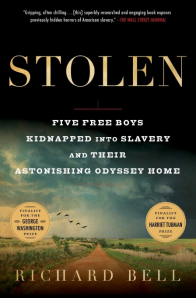
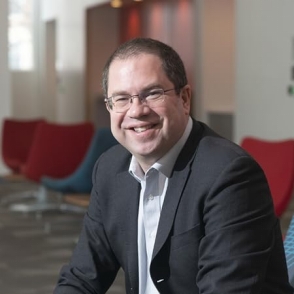
Minutes
Our December meeting was our 472nd. The meeting had 25
registrants and participants through Zoom.
Our speaker was Richard Bell, a professor of history at
the University of Maryland at College Park who
specializes in the history and culture of the
U.S. from 1750 to 1877. Professor Bell’s most
recent book is
Stolen: Five Free Boys
Kidnapped into Slavery and Their Astonishing
Odyssey Home. The book formed the basis of his presentation.
In August 1825, Cornelius Sinclair and four other African
American boys were taken or lured aboard a ship
in Philadelphia, where they were forcibly bound
to be sold as slaves. Unfortunately, this was
not an isolated event. In the early nineteenth
century, Philadelphia was a hunting ground for
professional slave catchers. As a result, it
was probably one of the most dangerous places in
the U.S. to be a free African American.
During the late eighteenth and early nineteenth centuries,
the Northern states gradually abolished slavery.
By 1825, the North and the South seemed like
two different worlds, separated by the
Mason-Dixon line. With the abolition of the
importation of slaves from Africa in 1808, the
options that Deep South planters had for buying
new slaves became more limited. While the
interstate slave trade became much more
important, opportunities also existed for the
unscrupulous to kidnap free people. By 1825,
Philadelphia had become the center of what is
known as the “Reverse Underground Railroad,” in
which African Americans–both former slaves and
those who had always been free–were kidnapped
and transported south to be sold into slavery.
Professor Bell believes that the amount of traffic on the
“Reverse Underground Railroad” was roughly the
same as that of the much better known
“Underground Railroad,” in which slaves were led
to freedom in the North, Canada, and Mexico.
However, the “conductors” of the former were
motivated by money. Although they left little
documentation of themselves behind, they left
their mark on the country. Professor Bell said
that it’s likely that tens of thousands of free
African Americans–many of them children–were
kidnapped during the decades prior to the Civil
War. Most were never heard from again. When
this happened, the police and magistrates could
rarely be persuaded to get involved. Even when
the traffickers were apprehended, they knew how
to talk their way out of trouble.
The phenomenon of African Americans being kidnapped has
became widely known in recent years due to the
2013 film
Twelve Years a Slave, based on the book of the same name which details the
experiences of Solomon Northup, a free violinist
from New York state who was drugged and taken by
ship to New Orleans in 1841, and spent twelve
years in slavery before regaining his freedom.
Northup’s experience, however, was not at all
typical of those who were kidnapped. Kidnappers
preferred to lure away poorly educated street
kids. Unlike Northup, they were not transported
by ship but forced to march south on foot.
The five boys kidnapped in Philadelphia in 1825 were held
in safehouses in Delaware, then marched to
Alabama and Mississippi. To reconstruct their
story, Professor Bell began with
letters written by and to the mayor of Philadelphia, as
well as an antislavery magazine. The research
ultimately took six years and involved 35
archives in 14 states and Washington DC. The
item that affected him the most, he said, was a
missing person’s advertisement by Joseph
Sinclair, Cornelius’s father.
In his presentation, Professor Bell did not go into detail
about the fate of the kidnapped boys for legal
and publishing reasons. However, he did say
that the incident led to Pennsylvania passing a
personal liberty law in 1826, and that more
broadly, the rescue efforts of parents and
others radicalized African American communities
to use self-defense tactics for their own
protection. He said that since black lives have
always mattered, these stories are worth
telling.
|
|
Notes from the President
On behalf of our Board, I wish you all a Happy and Blessed
Holiday Season! Whether you celebrate Christmas, Chanukah
(Hanukkah), Ashura, Bodhi Day, Kwanza or any other festival of
note, May Peace Be with You All! Please stay Covid safe!!!!
Speaking of Covid=19, after nearly four years of trying to stay
healthy, I now write this as a person currently isolated as a
covid positive individual. Fortunately, Paxlovid seems to be
improving my lot and I am feeling better.
It is also fortunate that our December meeting had to be changed
to completely virtual. Here’s the Link to register for Tuesday’s
Zoom.
https://us02web.zoom.us/meeting/register/tZMlf-Cqqz0rEtQHbZklgW3jrqQhoy0ACrAE
University of Maryland Prof. Richard Bell addresses his work;
Stolen. Five Free Boys Kidnapped into Slavery and Their
Astonishing Odyssey Home
The results of November meeting elections are as follows: Robert
L. Ford- President, Martin French - Vice President, Lee Hodges-
Secretary, Ray Atkins- Treasurer, Robert Toelle, Robert
Testudine and Frank Armiger- Board members.
The BCWRT Needs your help. Renew your membership, now. Invite
your friends to join. After his illness, Ray Atkins is back to
processing the memberships. Membership is $25 or $35 for
families. Mail your checks to:
Ray Atkins, Treasurer, BCWRT
1204 Fordham Ct.,
Belair, MD 21014
If you are not a member, please join! Invite others to join.
The bottom line is, without your membership, we cannot afford
speakers, much less sponsor activities and support Civil War
organizations,
|
Meeting: November 28, 2023
|
Since the end of the Civil War in the United
States,
the erection of war related monuments and
memorials have been a source a praise and
controversy. CSA General Robert E. Lee expressed
his opposition to such memorials. Lee noted “As
regards the erection of such a monument as is
contemplated: my conviction is, that however
grateful it would be to the feelings of the
South, the attempt in the present condition of
the Country would have the effect of retarding,
instead of accelerating its accomplishment; & of
continuing, if not adding to, the difficulties
under which the Southern people labour.” [Robert
E. Lee to Thomas L. Rosser, Dec. 13, 1866. Lee
Papers, University of Virginia Archives.]
The sometimes-heated issue of CSA monuments
continues in the present day. Authors
Chris Mackowski and Jon
Tracey have compiled and edited a number of
essays in their new book;
Civil War Monuments and Memory; Favorite Stories
and Fresh Perspectives from the Historians at
the Emerging Civil War.
The co-authors will discuss the book during the
Baltimore Civil War Roundtable (BCWRT) meeting
on Tuesday, November 28, 2023, at 7:30 p.m. The
meeting takes place at the Parkville Senior
Center, 8601 Harford Rd, Parkville, MD 21234.
Enter parking lot from Hiss Ave. There is a
$5.00 charge for non-members to attend the
meeting.
Chris Mackowski, Ph.D., is the editor-in-chief
and co-founder of Emerging Civil War and the
series editor of the award-winning Emerging
Civil War Series, published by Savas Beatie.
Chris is a writing professor in the Jandoli
School of Communication at St. Bonaventure
University in Allegany, NY, where he also serves
as associate dean for undergraduate programs.
Chris is also historian-in-residence at
Stevenson Ridge, a historic property on the
Spotsylvania battlefield in central Virginia. He
has worked as a historian for the National Park
Service at Fredericksburg & Spotsylvania
National Military Park, where he gives tours at
four major Civil War battlefields
(Fredericksburg, Chancellorsville, Wilderness,
and Spotsylvania), as well as at the building
where Stonewall Jackson died.
Jon Tracey is a public historian focused on
soldier experience, medical care, memory, and
veteran life in the Civil War era. He holds a BA
in History from Gettysburg College with minors
in Public History and Civil War Era Studies and
an MA from West Virginia University in Public
History with a Certificate in Cultural Resource
Management. Jon has worked extensively
preserving and interpreting historic sites,
including with the National Park Service. Most
of his recent research focuses on either the
complex topic of historical memory of the Civil
War or Camp Letterman General Hospital, the
largest hospital in the aftermath of the Battle
of Gettysburg. He is currently a
Historian/Cultural Resource Program Manager and
manages the ECW Editorial Board that reviews
guest post submissions.
Again, the meeting takes place at the Parkville
Senior Center, 8601 Harford Rd, Parkville, MD
21234. If you can’t join us; register for the
Zoom at
https://us02web.zoom.us/meeting/register/tZYpc-uorjsqHtTnJm6nltw98yIdEMGCDPL1
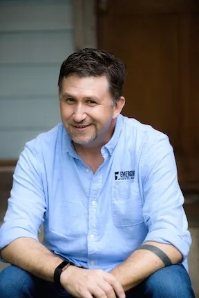
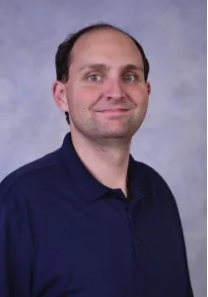

Chris Mackowski Jon
Tracey
Minutes
Our November meeting was our 471st. The meeting had 7
in-person attendees and 27 attendees through
Zoom.
Elections for officers were held. Robert Ford- President,
Martin French - Vice President, Lee Hodges-
Secretary, Ray Atkins- Treasurer, Robert Toelle,
Robert Testudine and Frank Armiger- Board
members were elected by acclamation.
Our speakers were Chris Mackowski, editor-in-chief and
co-founder of Emerging Civil War as well as
series editor of the Emerging Civil War Series,
and Jon Tracey, a public historian who
specializes in Civil War memory, soldier
experiences, medical care, and veteran life.
Mr. Mackowski and Mr. Tracey are the co-editors
of
Civil War Monuments and Memory:
Favorite Stories and Fresh Perspectives from the
Historians at Emerging Civil War. The themes and issues discussed in this book formed the
basis of their presentation.
Mr. Mackowski and Mr. Tracey began by asking: How did
people remember the war? “Memory” is a very
broad term, referring to how people remember an
event regardless of whether they were actually
there or not. Often, memory will take the form
of monuments, memorials, markers etc.
Mr. Tracey said that a monument is a snapshot of what the
people who put it up were thinking at that
particular point in time. When contextual
plaques, etc. are put up today, it’s a
reflection of how people want to remember it in
the present. As time changes, our understanding
of these monuments change as well. This makes
discussions about them “sticky.”
Moreover, any discussion of monuments must address the
question: “What is a monument?” National Park
Service (NPS) interpretive wayside markers at
battlefields are not monuments. Mr. Mackowski
and Mr. Tracey discussed examples of monuments
that transmit particular messages, such as the
Stonewall Jackson statue at Manassas/Bull Run
that was unveiled in 1940. The latter, they
noted, makes Jackson look much more muscular
than he was in real life–more like Arnold
Schwarzenegger than like the man Jackson really
was. They then asked a question: if we take the
monument down, are we erasing history, or just a
particular way of remembering Jackson? There
are many ways to look at our heroes–some of
which are not very flattering. Monuments
frequently trap us into a particular “heroic”
perspective.
Civil War Monuments and Memory
has stories about the erection of particular monuments.
Many people take battlefield monuments for
granted. But they didn’t just spring from
nowhere. Their histories are often very
interesting and complicated. Regimental and
battery monuments claim to be located where the
units they represent fought on the battlefield.
However, this is not always the case.
Monuments can also give historically inaccurate
information–a United Daughters of the
Confederacy (UDC) monument at Fredericksburg is
an example of this. The NPS has a policy of not
altering monuments. However, it will add
markers that give context and correct erroneous
information on them.
In dealing with monuments, there are issues of community
and ownership to be considered–the question of
who has the right to put a monument in a
particular place. Another important issue is
the cultural landscape of the event in question.
How was a particular battle commemorated
overtime? How did the commemoration change?
What veterans and communities were thinking in
1865 wasn’t necessarily what they were thinking
in 1913, for example.
In recent years, Confederate monuments (and often other
monuments as well) have become increasingly
controversial. Mr. Mackowski and Mr. Tracey
said that the number of these that have been
removed is often overstated. The ones that
are
removed are usually the ones that make headlines. When
dealing with this subject, one has to be open to
other points of view–different people may see
the same thing in very different ways. Some see
Confederate monuments as symbols of slavery and
racism, while others see them as honoring the
valor and sacrifice of those who served in the
Confederate military.
The total number of Civil War monuments depends on what is
meant by “monument.” The Gettysburg battlefield
has a total of about 1,400 monuments and
markers, probably the most of any Civil War
battlefield.
|
|
Notes from the President
n
1863, United states president Abraham Lincoln issued a
proclamation calling for the last Thursday of November to be set
aside as a day of “Thanksgiving and Praise.” The Baltimore civil
war roundtable (BCWRT) hopes all of you had a fulfilling
thanksgiving celebration.
Reminder: Since we are approaching the end of the year, it is
time for all members to pay their dues for 2024 and we invite
all interested person to join our group. Annual dues for the
Baltimore Civil War Roundtable are $25.00 for individuals and
$35.00 for families. Please make check payable to: BCWRT and
mail to: Ray Atkins, 1204 Fordham Ct., Belair, MD 21014. You can
find the membership form in the membership portion of the
webpage.
|
Meeting: October 24, 2023
|
Join the
Baltimore Civil War Roundtable as we present
author Elizabeth
D. Leonard
discussing her book Benjamin
Franklin Butler: A Noisy, Fearless Life.
Benjamin Franklin Butler was
one of the most important and controversial
military and political leaders of the Civil War
and Reconstruction eras. Remembered most often
for his uncompromising administration of the
Federal occupation of New Orleans during the
war, Butler reemerges in this lively narrative
as a man whose journey took him from childhood
destitution to wealth and profound influence in
state and national halls of power. Prize-winning
biographer Elizabeth D. Leonard chronicles
Butler’s successful career in the law defending
the rights of the Lowell Mill girls and other
workers, his achievements as one of Abraham
Lincoln’s premier civilian generals, and his
role in developing wartime policy in support of
slavery’s fugitives as the nation advanced
toward emancipation. Leonard also highlights
Butler’s personal and political evolution,
revealing how his limited understanding of
racism and the horrors of slavery transformed
over time, leading him into a postwar role as
one of the nation’s foremost advocates for Black
freedom and civil rights, and one of its notable
opponents of white supremacy and neo-Confederate
resurgence.
The meeting will occur on Tuesday, October 23,
2023 at 7:30 p.m. The meeting takes place at the
Parkville Senior Center, 8601 Harford Rd,
Parkville, MD 21234. Enter parking lot from Hiss
Ave. There is a $5.00 charge for non-members to
attend the meeting.
Elizabeth D. Leonard is an American historian
and the John J. and Cornelia V. Gibson Professor
of History at Colby College in Maine. Her areas
of specialty include American women and the
Civil War era. She earned an M.A. in U.S.
History in 1988 and a PhD in 1992 from the
University of California Riverside.
Leonard has been teaching at Colby College since
receiving her PhD, serving as an assistant, then
associate professor from 1992 to 2003. She was
interviewed in a C-Span special on the history
of Augusta, Maine.
If you can attend in person, register for the
Zoom at.
https://us02web.zoom.us/meeting/register/tZckc-qoqT8rG9A0NYf6MtMb1W_eR08iP0Yp


Minutes
Our October meeting was our 470th. The meeting had 8
in-person attendees and 12 attendees through
Zoom.
Our speaker was Dr. Elizabeth D. Leonard, a professor of
history at Colby College. Dr. Leonard spoke on
the life and career of Union general Benjamin F.
Butler. She is the author of
Benjamin Franklin Butler: A
Noisy, Fearless Life, as well as other books on the Civil War.
Dr. Leonard began by discussing how she came to write a
biography of Butler. Butler attended Colby
College, and in discussions with Gary Gallagher,
Dr. Leonard said that she had “Chamberlain envy”
(referring to Joshua Lawrence Chamberlain)
because Chamberlain had gone to Bowdoin College,
only a short distance from Colby. In response,
Gallagher told her that she needed to learn more
about Butler. It turned out that there was a
great deal of material on Butler at Colby.
Having already written a biography of Joseph
Holt, Dr. Leonard decided to write one of Butler
as well.
Much of the image of Butler, Dr. Leonard said, has been
distorted by Lost Cause ideology and by allies
of this school of thought in the North. Butler
became known as “The Beast,” but Dr. Leonard
said that this characterization of him is very
simplistic, that Butler was in reality a much
more complicated man than that. Throughout his
life, Butler supported and tried to uplift the
underdog. During his lifetime, his sense of who
“the underdog” was changed considerably. In the
beginning, the girls working in mills in Lowell,
Massachusetts were his underdogs. He had lived
in a mill house with his mother and empathized
with them. Later, Butler’s underdogs included
poor people, workers, slaves, and–after the
war–freed African Americans.
Dr. Leonard said that the way Butler has been remembered
has been based on the sources–of which there are
many–that people have looked at. But sources
can be used selectively. In writing her
biography, she wanted to 1.) dig deeper and find
new sources, and 2.) asked why traditionally
used sources looked at him the way they did.
She wanted to start with his funeral, to show
how people felt about him when he died. The
funeral was massive, and representatives of many
groups attended.
Butler did much for factory workers–both male and
female–and was one of those who tried to
institute a ten-hour workday. A Democrat, he
was fiercely loyal to the Union. He commanded
the first Union troops to arrive in Washington
D.C. Butler established a “contraband” policy
at Fort Monroe, Virginia, under which escaped
slaves would be held as “contraband of war” and
used for the Union war effort. Although this
policy wasn’t consistently applied, Dr. Leonard
said, it was nevertheless an important step
toward emancipation.
Butler is famous for his time as governor of occupied New
Orleans. While his harsh measures (particularly
his order that women who harassed Union soldiers
were subject to being treated as prostitutes),
have been well remembered, the measures he took
against yellow fever and to
keep the city “sedated” have not been. As commander of
the Army of the James, Butler commanded many
African American soldiers. After the war, he
continued to help African
Americans, supporting the 14th and 15th Amendments and
becoming a cosponsor of the Civil Rights Act of
1875. Butler represented Massachusetts in
Congress for a total of ten years after the war.
He drafted the initial version of the Force Act
of 1871, designed to combat the Ku Klux Klan.
He supported women’s suffrage and veterans, and
pushed for the integration of West Point,
appointing African American cadets. Butler ran
for president in 1884. He was nominated by the
Greenback and Anti-Monopoly Parties but lost the
Democratic nomination to Grover Cleveland.
Dr. Leonard said that Butler was derided by many,
including rich and powerful people and former
Confederates. But, she said, he was beloved by
many others and deserves respect. Butler had an
anti-authoritarian personality. Many of the
things he did in Maryland weren’t sanctioned by
higher authorities, but he didn’t care. As a
war Democrat, he was important to keeping
Democrats in the war. He was a tremendous
organizer and administrator. After the war, he
never took a penny for helping African American
soldiers get their pensions.
|
|
Notes from the President
Dear BCWRT Community,
!. New Members. We like to welcome new members David K.
Henderson, Melissa J. Garrett: and Thomas R. Devaney to our
community. All three joined during our September meeting.
2. Speaking of the September meeting , we were hoping to have a
discount code to enable you to order copies of Steven Cowie's
When Hell Came to Sharpsburg; however, the book has proven so
popular that publisher Savas Beatie has sold out of its current
run. They plan to produce more during the winter. We will keep
you informed.
3. Our October 24th meeting will feature Dr. Elizabeth D.
Leonard discussing her prize-winning book, Benjamin Franklin
Butler: A Noisy, Fearless Life. This comprehensive work on a
controversial man is an excellent read. Copies can be ordered at
https://uncpress.org/book/9781469668048/benjamin-franklin-butler/
Use code 01DAH40 for a 40% discount
4. Last, but not least. It is election time for the Baltimore
Civil War Roundtable, which will occur in November. The
positions are President, Vice President, Secretary, Treasurer,
an 3 At Large Board Members. Nominations can be sent, via email,
to Committee Chair Martin French at
martin.french@batimorecity.gov. If you are nominating someone
besides yourself, have them send an email accepting the
nomination.
|
Meeting: September 26, 2023
|
161 years ago, the
Battle of Antietam, fought in and around
Sharpsburg, Maryland, occurred on September 17,
1862. It was the bloodiest day in American
history. By the time the battle ended, more than
23,000 men had been killed, wounded, or captured
in just a dozen hours of combat—a grim statistic
that tells only part of the story.
The epicenter of that deadly day was the small
community of Sharpsburg. Families lived, worked,
and worshipped there. It was their home.
Farmers, farmer workers, ministers,
entrepreneurs, freedmen and slaves were all
affected by this battle. And the horrific
fighting and its aftermath turned their lives
upside down. Despite the large number of books
and articles on the subject, the battle’s
horrendous toll on area civilians is rarely
discussed. When Hell Came to Sharpsburg: The
Battle of Antietam and Its Impact on the
Civilians Who Called It Home by Steven Cowie
rectifies this oversight.
Join the BCWRT as Steven Cowie presents his
unique look at the battle through the eyes of
the civilians who were trying to survive. The
meeting takes place at the Parkville Senior
Center, 8601 Harford Rd, Parkville, MD 21234.
Enter parking lot from Hiss Ave. There is a
$5.00 charge for non-members to attend the
meeting.
Steven Cowie earned a degree from California
State University, Long Beach. As part of the Los
Angeles film industry, he penned spec
screenplays and sold his award-winning short
film to the Sundance Channel. A lifelong student
of the Civil War, Cowie dedicated fifteen years
to exclusively researching the Battle of
Antietam. When Hell Came to Sharpsburg is his
first book.
If you can't attend, register for the Zoom at:
https://us02web.zoom.us/meeting/register/tZIkcu-rqTkuHdFuoXcR3vEJALAgs9gQM01p
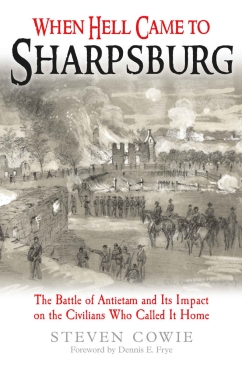
Minutes
Our September meeting was our 469th. The
meeting had 9 in-person attendees and 27
registrants through Zoom, of whom 23 attended.
The BCWRT was pleased to welcome three new
members: David K. Henderson, Melissa J.
Garrett, and Thomas R. Devaney.
Our speaker was Steven Cowie. Mr. Cowie spoke
on the hardships faced by civilians in the
Sharpsburg area during and after the battle
(also known as the battle of Antietam), which
occurred on September 17, 1862. Mr. Cowie is
the author of
When Hell Came to Sharpsburg: The Battle of Antietam and
Its Impact on the Civilians Who Called It Home.
In 1862, the district of Sharpsburg had a
population of around 2,400, including 150
enslaved and 200 free African Americans. The
Potomac River, to the west, separated Maryland
from Confederate Virginia. In September 1862,
the mostly farming population was focused on
threshing wheat, rye, and oats. They were also
getting ready to harvest potatoes and clover.
Fields were fenced off and dedicated to
different crops. Unfortunately for the people
of the area, September was probably the worst
time to interrupt farming.
Before the battle, many civilians fled to caves,
farmsteads, etc. Others went into the basements
of brick and stone houses. These places became
very crowded. Many families lived on or near
the battlefield. The town itself took a
beating, with hundreds of Union shells passing
over Confederate batteries and crashing into the
town, doing great damage to homes and buildings.
Many homes caught fire. Others were ransacked
by soldiers on both sides. In some cases,
families were robbed of everything.
Following the battle, many people returned to
find corpses and body parts in and/or around
their homes. The stench overwhelmed soldiers
and civilians alike, and civilians had to bury
soldiers overlooked by the burial parties.
Barns and homes were seized for the
wounded–many civilians couldn’t return home
because their houses were filled with wounded.
Other wounded men were left outside, exposed to
the elements. Medical staff had to go into
homes and take what they needed–clothes,
medicine, etc. Civilians pitched in, helping
members of both armies. They cared for the
wounded and gave them food. Some woke up at 4
am to go to Hagerstown and search for supplies
for the wounded.
When Lee’s Army of Northern Virginia withdrew to
Maryland, most of the Army of the Potomac
remained in the Sharpsburg area. This prolonged
and exacerbated the suffering and hardship of
the civilian population. The army made
Sharpsburg its supply depot, and ultimately took
far more from civilians than the Confederates
had. In addition to thousands of farm animals
being butchered, more than 600,000 fence rails
were taken. This made it difficult to
distinguish one family’s property from
another’s. Civilians complained that the army’s
animals consumed the fall harvest, including
clover. Many farmers couldn’t put in the seed
for their wheat crop because the window for
planting wheat is very narrow. Huge amounts of
grain were taken as well.
Ecological conditions after the battle were
abysmal. Animal carcasses decomposed on the
field. Swarms of houseflies were drawn to the
corpses. There was also a mass outbreak of
disease in which many civilians died.
In order to receive compensation for their
losses, civilians were entitled to file claims
with the government. The process was long and
difficult. Under the Act of July 4th, 1864,
Quartermaster General Montgomery Meigs was
empowered to send people to interview civilians
and document what had happened to them. But
this didn’t begin in earnest until the 1870s,
and there were many restrictions on
compensation. For example, any damage directly
caused by combat was excluded. Ultimately, the
residents of Sharpsburg only received about 15%
of what they claimed.
However, under the Bowman and Tucker Acts (of
1883 and 1887 respectively), if a person’s July
4th claim had been totally rejected, they could
refile it. However, if the person had
previously accepted even a small settlement,
they could not do this. Civilians who applied
under these acts received about 50% of their
claims. Civilian claims connected to the battle
of Antietam were not closed until 1915–53 years
after the battle.
|
|
Notes from the President
Dear bcwrt community,
September 17, 2023 marked the 161st anniversary of the battle of
Antietam in and around sharpsburg, Maryland. Around 23,000
soldiers were killed, wounded or captured in that bloodiest day
in united states history.
The casualty list above does not include the many citizens of
Washington, county md who were directly impacted as the army of
the Potomac and the army of northern Virginia fought in the
fields, orchards, yards, houses and barns of this small
community. Author steven cowie will delve into the rarely
focused effect of the battle on the citizenry as his presents
his book ‘when hell came to Sharpsburg: the battle of Antietam
and its impact on the civilians who called it home.’
The meeting takes place at the Parkville Senior Center, 8601
Harford Rd, Parkville, MD 21234. Enter parking lot from Hiss
Ave.
Sharpsburg, md. Is a 1 hour 20-minute trip from Baltimore. Much
if the terrain resembles what it did at the time of the battle.
The visitor’s center has been renovated and recently reopened.
If enough interest is shown, perhaps the bcwrt can do a field
trip yo the sight.
|
Meeting: August 22, 2023
|
The 1983 battle of Gettysburg literally began in
site of the Gettysburg Lutheran Seminary.
General John Buford observed the movements of
the rebel soldiers from the Copula of the
Seminary's original building. That building is
now the Seminary Ridge Museum and Education
Center. Executive Director
Peter C. Miele will
present its history at the BCWRT meeting on
Tuesday, August 22, 2023 at 7:30 p.m.
Peter C. Miele was
named third Executive Director of Seminary Ridge
Museum and Education Center on May 26, 2020.
Born and raised in northern New Jersey,
Miele received
his Bachelor of Arts in History and Secondary
Education from Ramapo College of New Jersey in
2011. In 2013, he relocated to Gettysburg,
Pennsylvania and earned his Master of Arts in
Applied History from Shippensburg University of
Pennsylvania in 2014. In fall 2021, he will
begin coursework towards a Ph.D. in American
Studies at The Pennsylvania State University,
Harrisburg.
Miele began
his career as an educator in the Northern Valley
School District in Old Tappan and Demarest, New
Jersey, teaching American History, World
History, and American Studies. He later moved
into the field of public history, starting as a
Visitor Services Assistant at Seminary Ridge
Museum and Education Center in 2013. Since
then, he has served as Visitor Services
Coordinator, Director of Education and Museum
Operations and, most recently, Chief Operating
Officer and Director of Education. During his
tenure at Seminary Ridge Museum, he has served
as the primary architect of the visitor
experience, constructing a robust educational
and interpretive program that has helped
thousands of visitors, young and old, gain a
deeper understanding of the Civil War and its
legacy. Throughout 2019 and 2020, he oversaw
the transformation of the museum’s changing
exhibit gallery into the Lydia Ziegler Clare
Education Center, a sixteen-person flexible
classroom space on the first floor of the museum
with the capacity to engage digitally with
individuals and groups all over the world.
In addition to museum work,
Miele
is actively engaged in the community. He is
Vice President of the Civil War Roundtable of
Gettysburg and Treasurer of Main Street
Gettysburg. In 2016 and 2018, he served as an
Adjunct Instructor for Shippensburg University’s
History/Philosophy Department.
The meeting is at the Parkville Senior Center,
8601 Harford Rd, Parkville, MD 21234. Enter
parking lot from Hiss Ave. Use the rear entrance
to Center. (There will be direction signs in the
windows on your left). $5.00 for non-members.
Register here to access Zoom.
https://us02web.zoom.us/meeting/register/tZYuce-upjgrHtazwyIaD8wWVauFuv24XDAI
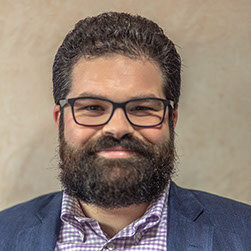 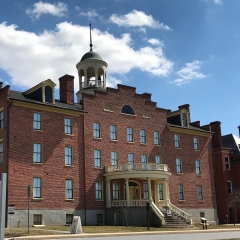
Peter C. Miele Seminary Ridge Museum
Minutes
Our August meeting was our 468th. The meeting
had 10 in-person attendees and 9 attendees
through Zoom.
Our speaker was Peter Miele. Mr. Miele, who is
Executive Director of the Seminary Ridge Museum
and Education Center, spoke about the Lutheran
Seminary at Gettysburg. The Museum and
Education Center is located in the Seminary’s
original building.
Mr. Miele said that the Civil War was “made”
inside, even though it was fought outside. The
breakdown of inside discussions and debates led
to the war. When the Seminary was turned into a
hospital, Mr. Miele said, the war went “inside”
again.
The Seminary was founded in 1826. During the
early nineteenth century, becoming a Lutheran
minister required either apprenticing or going
to Germany. Samuel Simon Schmucker (1799-1873)
attended the University of Pennsylvania. His
first call as a minister was in New Market,
Virginia. In 1826, Schmucker and other Lutheran
leaders wanted to establish a seminary that was
easy to get to. However, they did not want it
to be in a major city because they thought it
should be a place of contemplation.
After Schmucker’s first wife died, he remarried
and he and his wife were “gifted” two slaves.
When he arrived in Pennsylvania, he initiated a
legal process in which the slaves were
indentured for seven years. When the seven
years were up, they were set free. Schmucker
was the “workhorse” of the Seminary, completely
devoting himself to its success. As time went
by, he developed a new form of Lutheranism.
According to Mr. Miele, Schmucker realized that
if the religion was going to survive, it had to
adapt to the United States. He became more
evangelical in his outlook.
During this time, Adams County was literally on
the border between slavery and freedom.
Students came from both the North and the South
and created, Mr. Miele said, a sort of “civil
war” within the Seminary. In 1835, Schmucker
welcomed Daniel Alexander Payne. Payne, who was
born a free person of color in Charleston, had
operated a school there. However, in the years
following Nat Turner’s rebellion, South Carolina
prohibited the education of free people of
color, so Payne had to close the school down.
He traveled to New York City, and after hearing
about Gettysburg went to the Seminary. When
Schmucker met Payne, it was the first time he
had met a person of color in an educated
context. Other students would go on to have
Confederate connections, including Washington
Muller, whose son would join the 14th South
Carolina Infantry. The 14th participated in the
fighting outside the Seminary.
On June 30, 1863, Major General John Buford rode
into Gettysburg and noticed a body of
Confederates on the roadway. He went to the
Seminary’s cupola, and the view that he had from
there set up the opening of the ensuing battle.
He resolved to buy time for the Army of the
Potomac’s 1st Corps to arrive. The first day of
Gettysburg was very important, Mr. Miele said,
because it set the stage for what transpired
over the following two days.
As the Confederates began their push on the
first day, the 151st Pennsylvania Infantry was
deployed to cover the retreat from McPherson’s
Ridge, and ended up being Major General Abner
Doubleday’s last reserve regiment there. They
fell back to the Seminary. At 4 P.M., the
barricade line established there was broken, and
the 151st fled to Cemetery Hill. Their
commander, Lieutenant Colonel George McFarland,
was shot in both legs and dragged into the
Seminary building. Everyone who took refuge in
the Seminary was taken prisoner. On September
16, 1863, McFarland became the last patient to
leave the Seminary hospital. He resumed
teaching as a schoolteacher. In December 1891,
he died of his wounds. The 151st Pennsylvania
sustained about 75% casualties among those who
participated in the battle.
Today, a visitor can connect with the Civil War
within the walls of the Seminary. It makes, Mr.
Miele said, for a museum experience unparalleled
at Gettysburg.
|
|
Notes from the President
We are at the end of August, the traditional end of summer. Folk
are returning from summer vacations or getting in those end of
summer excursions.
During the civil war, both armies spend much of august preparing
for major end of summer campaigns (2nd Bull
Run, Antietam, Chickamauga, New Market Heights).
The Baltimore civil war roundtable is hoping that our community
takes this opportunity to return our in-person gatherings at the
Parkville senior center.
On Tuesday, August 22, at 7:30 p.m. we will be joined by Peter
C. Miele, the executive director of the seminary ridge museum
and education center in Gettysburg. Miele’s topic will be “The
Civil War Inside and Outside: A Brief History of the Lutheran
Seminary and the Battle of Gettysburg”.
Most Civil war enthusiasts know this building to be the location
where the 1863 battle of Gettysburg literally began as General
John Buford observed the movements of the rebel soldiers from
the Copula of the Gettysburg Lutheran Seminary's original
building.
The museum officially opened on July 1, 2013. Yours truly was
one of the reenactors who was given the opportunity to stand
where genl. Buford stood 150 years prior.
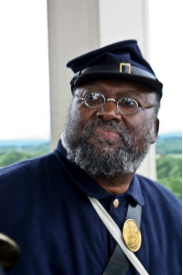
|
Meeting: July 25, 2023
|
In June of 1864, General Robert E. Lee sent
General Jubal Early and his forces to the
Shenandoah Valley with orders to move north into
Maryland and east to Washington. The overall
goal was to loosen General US Grant’s grip on
Lee’s forces around Petersburg, threaten
Washington, D.C. and to free rebel prisoners at
various POW camps. Early enlisted the aide of
two Maryland born rebel calvary officers,
Bradley Johnson and Harry Gilmore to achieve his
goal.
The
Johnson-Gilmor Raid represents one of three
attempts to free prisoners of war during the
American Civil War. Like the other two, it was
destined to fail for a variety of reasons,
mostly because the timetable for the operation
was a schedule impossible to meet. Award-winning
cavalry historian
Eric J. Wittenberg presents
the gripping story in detail for the first time
in his forthcoming book
The Johnson-Gilmor Cavalry Raid around
Baltimore, July 10-13, 1864.
Join the Baltimore Civil War Roundtable for an
early book presentation on Tuesday, July 25,
2023 at 7:30 p.m.
We meet at the Parkville Senior Center, 8601
Harford Rd, Parkville, MD 21234. (Enter parking
lot from Hiss Ave. Use rear entrance to
Center.). Non-member fee is $5.00.
Philadelphia, Pa. native
Eric J. Wittenberg is
a Civil War historian, author, lecturer, tour
guide and battlefield preservationist. He is a
practicing attorney in downtown Columbus,
Ohio.
His published works have focused especially on
the Civil War cavalryman and the cavalry battles
of the Civil War, with emphasis on the Army
of the Potomac's Cavalry
Corps.
His first book, Gettysburg's
Forgotten Cavalry Actions,
was chosen as the best new work addressing the Battle
of Gettysburg in
1998, winning the Robert E. Lee Civil War
Roundtable of Central New Jersey's
Bachelder-Coddington Award. In 2015, his book The
Devil's to Pay: John Buford at Gettysburg won
the Gettysburg Civil War Roundtable's 2015 Book
Award. He was a member of the Governor of Ohio’s
Advisory Commission on the Sesquicentennial of
the Civil War and has been active with several
Civil War battlefield preservation
organizations. He and his wife Susan Skilken
Wittenberg reside on the east side of Columbus,
Ohio
If you can’t attend in person, register for the
Zoom at:
 https://us02web.zoom.us/.../tZEpf-uppjssHdJG6kJXHMQQC... https://us02web.zoom.us/.../tZEpf-uppjssHdJG6kJXHMQQC...
Once registered, you will receive an email link
for the actual program.

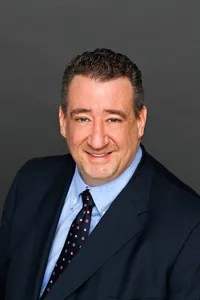
Minutes
Our July meeting was our 467th. The meeting had 7
in-person attendees and 14 who attended through
Zoom.
Our speaker was Eric Wittenberg. Mr. Wittenberg, an
attorney who is the author or co-author of many
books on the Civil War and an expert on Civil
War cavalry, spoke about the 1864 Johnson-Gilmor
raid in the Baltimore area. Mr. Wittenberg’s
book on the subject, entitled
The Johnson-Gilmor Cavalry Raid
Around Baltimore, July 10-13, 1864, will be published in November 2023.
By the end of June 1864, the Army of Northern Virginia was
besieged at Petersburg. According to Mr.
Wittenberg, Robert E. Lee realized that if he
didn’t do something to change the situation, the
war would be over. Lee ordered Jubal Early,
commander of the 2nd Corps, to the Shenandoah
Valley to clear it of David “Black Dave”
Hunter’s forces and, if possible, to cross the
Potomac and enter Maryland after that. On June
17-18, Early repulsed Hunter’s forces at
Lynchburg. By July 5, it was recognized that
Washington was in danger. To defend the city,
Ulysses S. Grant sent a force under Major
General Lew Wallace. Grant didn’t like Wallace,
blaming him for having arrived late at Shiloh.
Meanwhile, Lee and Jefferson Davis devised plans for a
raid to free Confederate prisoners at Point
Lookout in southern Maryland. Point Lookout was
the site of a major POW camp–about 52,000
prisoners were held there over a two-year
period. Conditions were poor–at times, 16 men
slept in one tent and 3 shared a single blanket.
A total of between 3,000 and 4,000 Confederate
POWs died at the camp.
The raid was originally going to involve both land and sea
operations. Confederate naval commander John
Taylor Wood would assault the camp with a fleet
coming from the Chesapeake Bay, and Major
General G.W.C. Lee (George Washington Custis, a
son of Robert E. Lee) was to command troops in
the amphibious portion of the operation. But
Davis decided to cancel the naval component of
the raid because he believed there was too much
loose talk for it to be kept a secret.
The task of leading the raid was assigned to Brigadier
General Bradley Tyler Johnson, a native of
Frederick. Johnson’s second in command was
Major Harry Gilmor of Baltimore. Altogether,
about 1,100-1,200 men would take part. Johnson
was given three days to ride 250-300 miles, move
through Frederick to Cockeysville, cut the B&O
and the Western Maryland Railroad, and then
march south to Point Lookout. According to Mr.
Wittenberg, it was an impossible task.
Johnson’s ride took place during July 9-12 (on July 9, the
remainder of Early’s force defeated Wallace in
the battle of Monocacy). At Cockeysville, some
of his men helped themselves to ice cream (which
many had not seen before) and referred to it as
“frozen beer.” Johnson’s men also burned the
home of Governor Augustus Bradford in
retaliation for Hunter’s burning of former
Virginia Governor John Letcher’s home. When
Early approached Fort Stevens and saw many Union
troops emerging from DC, he realized he needed
the cavalry to cover his retreat, so he aborted
the mission. Johnson slipped past the
Washington defenses and rejoined Early, forming
the rearguard.
Johnson detached Gilmor on July 10 to destroy railroad
bridges across the Gunpowder River. Gilmor’s
ride took place during July 10-14. He went to
Magnolia Station and captured two trains,
setting one (and the station) ablaze. Among
those taken prisoner by Gilmor’s men was Major
General William B. Franklin. However, Franklin
later escaped and hid until the threat had
passed. Gilmor left Pikesville on July 12 and
went to Randallstown. His men were exhausted
from constant riding, and many fell asleep. By
July 14, Gilmor’s raid was over, and he rejoined
the army.
Mr. Wittenberg said that the raid was probably doomed from
the start. For one thing, the logistics were
inadequate. Secondly, the amount of time
allotted–three days–wasn’t nearly long enough to
cover the ground required. Thirdly, even if the
Confederates had emptied Point Lookout, the
prisoners would have been too weak to march with
Early’s army as it re-crossed the Potomac back
into Virginia.
|
|
Notes from the President
Dear BCWRT Community
In the middle of the 20th century,
there lived an influential , multi-instrumentalist named Rashaan
Roland kirk. In his bold and philosophical approach to music, he
warned; “the boogie electric is out to get you!” This was his
warning that the increasing dependance on electronics in music
could lead to trouble, especially when the technology doesn’t
work.
The bcwrt ran into that problem during last months presentation
by paul bolcik on the picture of the 3 confederate prisoners at
Gettysburg. Those who attended the meeting in person experienced
a great presentation. Those online got nothing.
Fortunately, Paul later put together a youtube version of his
talk that we sent to our community. If you didn’t receive it,
use this
https://youtu.be/lduDJCEIvdw
We encourage you to attend our meetings in person if you can.
BCWRT meetings are at the Parkville Senior Center, 8601 Harford
Rd., Parkville Md. 21234. Enter the parking lot from Hiss Ave.
to use the rear entrance to the Center.
Rather our speaker is in house or online, your presence adds to
the Comradery we seek as an organization.
|
Meeting: June 27, 2023
|
Wartime photography began to emerge during the
Mexican American War of 1846/48. Progress was
made during the Crimean War of 1853-1956. It was
not until the Ameican Civil War the audience
became used to witnessing recent battlefield
scenes published in magazines, newspapers, and
other periodicals.
Many Civil War images are ingrained in the minds
of people born after those images were
developed. Most enthusiasts recognize the
picture of Lincoln visiting McClellan after
Antietam, the horrific photo of “Whipped Peter”
or the Confederate troops moving through
Frederick, Maryland.
Another important and memorable CW image is the
Mathew Brady & Co. picture of the three captured
rebel soldiers at the July 1863 Battle of
Gettysburg.
That photo is the subject of the next Baltimore
Civil War Roundtable meeting on Tuesday, June
27, 2023, at 7:30 p.m. We meet at the Parkville
Senior Center, 8601 Harford
Rd, Parkville, MD 21234. (Enter parking lot from
Hiss Ave. Use rear entrance to Center.)
Photography historian Paul Bolcik returns
to the BCWRT to delve into the story of this
famous image. He will reveal the history behind
this image.
Paul
Bolcik is
a founding member of the Montgomery Co. MD.
Civil War round table from Oct. 1980. His
writings photographs and investigations have
appeared in LIFE magazine, Civil War Times,
Civil War News, Military Images Magazine, The
Daguerreian Society's annual yearbook and
quarterlies, The Jonestown annual report and
Spokes (a Frederick, MD. based cycling newspaper
for the mid-Atlantic states).
Paul Bolcik last
spoke to the BCWRT in September of 2019, when,
along with
Erik Davis he
presented their findings on "Frederick,
MD and its Famous Confederate Photo",
the picture of rebel soldiers moving through
Frederick.
If you can’t attend in person, register for the
Zoom at :
https://us02web.zoom.us/meeting/register/tZYqcuGurjsqHtVGtSMTZaGvmuXTc6q_OYAZ

Minutes
Our June meeting was our 466th. The meeting had
7 in-person attendees and 31 registered through
Zoom (due to technical difficulties, those who
attended through Zoom were unable to hear the
presentation; however, a recording of the
presentation was subsequently sent by email to
BCWRT members).
Our speaker was Paul Bolcik, a photographic
historian. Mr. Bolcik spoke on the famous photo
of three Confederate prisoners captured at
Gettysburg. Together with Erik Davis, he had
previously spoken to the BCWRT in September 2019
on “Frederick, Maryland and Its Famous
Confederate Photo,” referring to the photo of
Confederate soldiers passing through Frederick.
Before speaking on the picture of the three
Confederate prisoners at Gettysburg, Mr. Bolcik
began with other Civil War photos and the
techniques he has used to probe the mysteries
surrounding them. He discussed “Smoking gun
evidence” that the Frederick photo was actually
taken on July 9, 1864, not during the
Confederate invasion of Maryland as has been
generally believed. He displayed a photo that
was supposedly taken during the war but said
that the picture must actually be one of Civil
War reenactors, since it was on a stereo card
that was not produced until the 1880s.
Mr. Bolcik then discussed the history of the
prisoner photo and its publication. On his trip
to Gettysburg, Matthew Brady had taken over
thirty photos, and the picture of the prisoners
was featured on a stereo card from August 1863.
On the back of the card, the comment “Rebel
Prisoners behind their breastworks” appears,
indicating that Brady and his assistants
probably did not get the names of the prisoners.
In the August 22 issue of
Harper’s Weekly,
11 stereo photographs from Brady & Co. were
featured, but the prisoner photo was not among
them.
The photo was first reproduced in book form in
the 1894
Memorial War Book by
George F. Williams, a veteran of the 5th New
York Infantry (DuryÚe’s
Zouaves) who became a war correspondent. In
1911, Francis Trevelyan Miller published the
ten-volume
The Photographic History of the Civil War,
in which the photo appears in Volume I.
Nevertheless, the photo appears to have been
little known until the Civil War centennial
period, becoming popular due to its publication
in a number of books during the 1950s and 60s.
It was also featured in William Frassanito’s
1975 book entitled
A Journey in Time.
Frassanito pinpointed the location of the
photo–it was taken across the street from the
James Henry Thompson House on Seminary Ridge.
In 2006, Gettysburg historian Timothy Smith
found a print of the photo that shows an area
much larger than what is usually displayed. The
print shows a great deal of lumber around the
prisoners. Mr. Bolcik said that it is probable
that most of the lumber are logs that may have
come from the “Tapeworm Railroad,” a failed
1836-9 railroad project, or a dismantled shoe
shop that was about 200 yards west of the photo
spot.
Mr. Bolcik then asked: Who were these prisoners?
From the details which can be seen in the
photo–for example, the fact that the leftmost
prisoner has what appears to be a medical box in
his haversack, as well as blood-stained
fingernails–he has concluded that the men were
likely surgeons or assistant surgeons. Mr.
Bolcik examined portraits of many Confederate
surgeons who were in Lee’s army at Gettysburg to
see if he could find matches for the prisoners.
He concluded that the man in the middle may
have been Dr. John Samuel Apperson, a surgeon in
the 4th Virginia Infantry, and that the man on
the right may have been Frank Patterson of the
2nd North Carolina Battalion. Mr. Bolcik said
that if the men
weren’t
surgeons, they were probably members of a squad
of prisoners that Union Captain Henry Blood took
to the Confederate hospital to assist in
“...cleaning up and to bury the dead” and who
were left there as nurses.
|
|
Notes from the President
Dear BCWRT Community,
Since the Covid-19 pandemic has begun ease its sometimes deadly
effects, the Baltimore Civil War Roundtable has eased back into
meeting at the Parkville Senior Center. Unfortunately, many of
you have not resumed attending meetings at the center. We miss
you!
We have only had about four or five of you at the most recent
meetings. Such a low turnout prevents us from conducting our
normal book raffle, which raises necessary operational funds.
Your lack of in-person attendance also effectively wastes the
rent that the Roundtable pays for using the Senior Center
facilities. While our current $450.00 rental fee for 2023 isn't
that steep, it is a necessary cost of our goal to present
quality programming.
The BCWRT urges all who can to attend our next meeting on
Tuesday, June 27, 2023 at 7:30 p.m. Our speaker, photo historian
Paul Bolcik, will explore the famous Mathew Brady and Co. photo
of the 3 Confederate Prisoners at Gettysburg.
Remember, BCWRT meetings are at the Parkville Senior Center,
8601 Harford Rd., Parkville Md. 21234. Enter the parking lot
from Hiss Ave. to use the read entrance to the Center.
As the old ad would say; "We'd love to see your face in the
place and your smile as yiu walk down the aisle."
Baltimore Civil War Roundtable
2023 Membership and Donation Form
Membership
$25 for Individual or $35 for Family
($20 for Students w/ID & First Time Members)
Please Print and Complete the Form. Make Your Check Payable to
BCWRT
Mail Form and Check to:
Ray Atkins, Treasurer, BCWRT
1204 Fordham Ct.,
Belair, MD
21014
NAME _______________________________________
ADDRESS____________________________________
CITY & STATE________________________________ Zip Code________
EMAIL________________________________
PHONE_________________________________
MEMBERSHIP AMOUNT__________________
DONATION AMOUNT_____________________
|
Meeting: May 23, 2023
|
War! The chronicles of mankind reveal many
different aspects to the state of conflict
between living creatures. The reasons change. So
do the weapons, location, people, leaders and
the degree of destruction. One area of warfare
that doesn’t change: soldiers go off to fight
while families and friends are left behind to
agonize, struggle mourn.
History professor and author
Holly A. Pinheiro, Jr. will
guide the BCWRT through the journeys of a number
of these soldiers and their families via his
book;
The Families Civil War: Black Soldiers and the
Fight for Racial Justice,
University of Georgia Press, 2022. We will
gather for this event at 7:30 p.m. on Tuesday,
May 23, 2023, at the
Parkville Senior Center, 8601 Harford
Rd, Parkville, MD 21234. Doors open at 7;00 p.m.
An Assistant Professor of
African American history at Furman University,
Dr. Pinheiro holds
a Ph.D. and M.A. from the University of Iowa, a
B.A. from the University of Central Florida and
a A.A, from Valencia College. His book tells the
stories of freeborn northern African Americans
in Philadelphia struggling to maintain families
while fighting against racial discrimination.
Taking a long view, from 1850 to the 1920s,
Holly A. Pinheiro Jr. shows
how Civil War military service worsened already
difficult circumstances due to its negative
effects on family finances, living situations,
minds, and bodies.
All BCWRT new and veteran members are urged to
attend. We’ll have an update on organization
business as part of this meeting. If you can’t
attend in person, join us via Zoom.
Register at
https://us02web.zoom.us/meeting/register/tZYvdeioqT8tE9UNebT5tiNJriBnkaL3c3OL
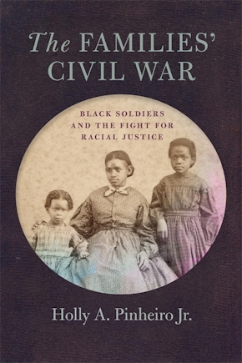
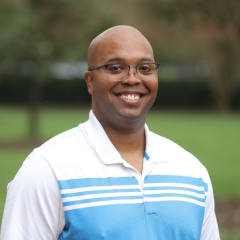
Minutes
Our May meeting was our 465th. The meeting had 18
registrants and 14 participants–4 in person
attendees and 10 who attended through Zoom.
Our speaker was Dr. Holly A. Pinheiro Jr., an assistant
professor of African American history at Furman
University in Greenville, South Carolina. Dr.
Pinheiro spoke on the challenges and hardships
that African American soldiers and their
families faced during the war.
Dr. Pinheiro is the author of
The Families’ Civil War: Black
Soldiers and the Fight for Racial Justice, which examines the histories of 185 free-born soldiers
from Philadelphia who served in the 3rd, 6th,
and 8th USCT. The book analyzes the experiences
not only of the soldiers themselves, but of
their families as well, and covers the postwar
decades as well as the war itself. All told,
Dr. Pinheiro said,
The Families’ Civil War
touches on the lives of nearly 1,000 people.
Dr. Pinheiro chose Philadelphia as the focus of the book
because he believed it to be the ideal city in
which to examine northern, free-born African
Americans who lived in a city with volatile
racial politics. In 1860, Philadelphia had one
of the most important free northern African
American communities. During the decades before
the war, there had been a great deal of racial
hostility, including large scale race riots in
which Black homes, schools, businesses, and
churches were burned. At the same time,
Philadelphia also had some of the North’s most
prominent abolitionist networks. Camp William
Penn, bordering the city, was the largest
training camp for African American recruits.
Dr. Pinheiro argued that the military service of African
Americans in the war has rightfully received a
good deal of scholarly attention. However, he
said, the effects of this service on the
families at home have been far less studied.
These families often suffered severely. Before
the war, they had already been struggling
economically due to racial discrimination.
During the war, the entry of able-bodied men
into military service often greatly intensified
their economic hardship. In some cases, this
situation did not end with the war itself–it
spanned multiple generations. If their loved
ones were killed or mortally wounded in battle,
or died of disease, the families were left to
fend for themselves permanently. In other
cases, veterans who returned with severe
physical, emotional, and/or psychological
problems largely relied on their families to
care for them. In addition, invalid veterans–or
the surviving relatives of soldiers who had
died–often had great difficulty obtaining
government pensions.
Dr. Pinheiro said that there is a wealth of primary
sources concerning the fate of African American
soldiers and their families, including Civil War
pension records, military service records,
regimental histories, published memoirs by USCT
soldiers, city directories, the federal census,
public speeches by prominent individuals, Union
League organizational records, and newspapers
(white as well as African American).
During the late nineteenth and early twentieth centuries,
Dr. Pinheiro said, African American service in
the war was downplayed. In response, some black
veterans made it their mission to publicize
their service and published their own accounts
and histories of African American participation
in the war. Among them were William W. Brown,
William J. Simmons, Alexander H. Newton, Joseph
T. Wilson, and George W. Williams. Dr. Pinheiro
said that
The Families’ Civil War
builds on the work of these men.
|
|
Notes from the President
Fact: The
federal income tax was first imposed in 1861 and 1862 to help
the United States pay for the Civil War. It is only my warped
opinion that the deadline of April 15 was chosen as a backdoor
reminder of the day that President Abraham Lincoln died.
April turned out to be a time of reflection for the Baltimore
Civil War Roundtable because we had to cancel the planned
in-person banquet which was to feature Dr. Andy Waskie’s
portrayal of
An Evening with General Meade.
There were several factors the led to the officer’s decision to
take the deposit loss and cancel the event. The bottom line is
that we didn’t sell enough tickets. While highly disappointing,
we must and will go on!
The BCWRT sent a cancelation notice giving folk three options
for their ticket purchase. We are still receiving and processing
forms, emails and checks. Those who requested a refund will
receive it soon. We welcome and thank those who chose to become
new members or extended their existing membership. You will
receive a written thanks. Thanks, will also go out to those who
chose to donate to the operation of the BCWRT.
Remember: Membership has its privileges!
We at the Baltimore Civil War Roundtable can’t draft members,
however, we encourage all of you to renew your membership for
2023. New recruits are very much welcome as well. Currently, we
have about 30 members. We’d like to, at least, double that
amount.
Membership is $25 for individuals and $35 for families. This
year, we are offering a rate of $20 for students with ID and for
new members. Print and use the form below.
Baltimore Civil War Roundtable
2023 Membership and Donation Form
Membership
$25 for Individual or $35 for Family
($20 for Students w/ID & First Time Members)
Please Print and Complete the Form. Make Your Check Payable to
BCWRT
Mail Form and Check to:
Ray Atkins, Treasurer, BCWRT
1204 Fordham Ct.,
Belair, MD
21014
NAME _______________________________________
ADDRESS____________________________________
CITY & STATE________________________________ Zip Code________
EMAIL________________________________
PHONE_________________________________
MEMBERSHIP AMOUNT__________________
DONATION AMOUNT_____________________
|
Meeting: April 25, 2023
|
 BALTIMORE
CIVIL WAR ROUNDTABLE BALTIMORE
CIVIL WAR ROUNDTABLE
Banquet Cancellation
The Baltimore Civil War Roundtable
regretfully announces that the Annual
Banquet, scheduled for Tuesday April 25,
2023, has been canceled. The event, An
Evening with General Meade featuring Dr Andy
Waskie, will not be rescheduled due to low
ticket sales.
If you have purchased tickets, the BCWRT
offers the following:
1. __Convert
your ticket purchase to a BCWRT membership
for the 2023 year (two years if two tickets
were purchased). The remaining amount will
be listed as a contribution to the BCWRT.
2. __Convert
your ticket purchase to a donation to the
BCWRT programming.
3. __Request
a full refund of your ticket purchase.
Please place a check mark beside your choice
and email the form to: rfordjazz@yahoo.com and atkinsray1@verizon.net
Name___________________________________________________
Addresss______________________________________________
State_________________________Zip
Code__________________
Email________________________________
Copy
text above to email or
edit form from this link and attach to
email.
|
|
Notes from the President
Baltimore Civil War Roundtable
2023 Membership and Donation Form
Membership
$25 for Individual or $35 for Family
($20 for Students w/ID & First Time Members)
Please Print and Complete the Form. Make Your Check Payable to
BCWRT
Mail Form and Check to:
Ray Atkins, Treasurer, BCWRT
1204 Fordham Ct.,
Belair, MD
21014
NAME _______________________________________
ADDRESS____________________________________
CITY & STATE________________________________ Zip Code________
EMAIL________________________________
PHONE_________________________________
MEMBERSHIP AMOUNT__________________
DONATION AMOUNT_____________________
|
Meeting: March 28, 2023
|
When the Civil War began, the dividing line
between the capital of the United States and
rebel held territory was the Potomac River. The
flags of each enemy government could clearly be
seen from across the shore. Everything changed
after a military excursion via the Potomac on
May 24, 1861 which resulted in the first highly
noted USA martyr during the Civil War.
Join the Baltimore Civil War Roundtable as
author
Meg Groeling discusses
her book
First Fallen: The Life of Colonel Elmer
Elllsworth, the North's First Civil War Hero.
This hybrid meeting will occur on Tuesday, March
28, 2023, at 7:30 p.m. The meeting will occur at
the Parkville Senior Center, 8601 Harford
Rd, Parkville, MD 21234
Meg Groeling is a regular contributor to the
blog Emerging Civil War, exploring subjects
beyond the battlefield such as personalities,
politics, and practices that affected the men
who did the fighting. A writer, teacher, and
curriculum developer since 1987, she has taught
at both the elementary and middle school levels
for more than thirty years. She graduated from
California State University, Long Beach with a
B.A. in liberal studies and has been involved in
continuing education for her entire career. Meg
received a master’s degree from American Public
University, majoring in military history with a
Civil War emphasis. Savas Beatie published her
first book, The Aftermath of Battle: The Burial
of the Civil War Dead, in the fall of 2015. She
lives in Hollister, California, in a lovely 1928
bungalow covered with roses outside and books
inside.
Again, we will meet at the Parkville Senior
Center with all our regular meeting items, (book
raffle, etc.). Those joining our speaker online
register at:
https://us02web.zoom.us/meeting/register/tZUpdu2tqjsrHtDhX64ZhtkRX9-ZD_b2dRzc
 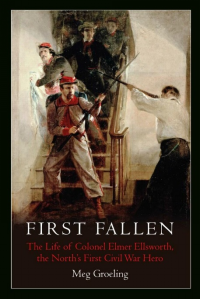
Minutes
Our March meeting was our 464th. The meeting had 4 in
person attendees and 17 registrants and
participants through Zoom.
Our speaker was Meg Groeling. Ms. Groeling spoke on Elmer
Ellsworth, the first Union officer killed in the
Civil War. Ms. Groeling is the author of
First Fallen: The Life of
Colonel Elmer Ellsworth, the North’s First Civil
War Hero.
Elmer Ellsworth was born on April 11, 1837. Although he
claimed to have grown up in poverty, this was
not the case. His life was typical of the
Northern working class; his family owned their
property and paid relatively high taxes. Even
as a child, Ellsworth engaged in military
drilling. As an adult, he invented a gadget
that let a train passenger open a window just
enough to get some air in. He subsequently went
into the patenting business with Arthur
Devereaux (Devereaux would become a colonel in
the Civil War). However, the militia remained
Ellsworth’s passion.
Ellsworth became the leader of the Zouave Cadets of
Chicago, renamed the United States Zouave
Cadets. According to Ms. Groeling, they were
“rock stars.” They toured the North and
captivated people with their marches and drills.
This raised the military consciousness of the
United States. John Hay said that Ellsworth was
“the most talked-of man in the country.”
Ellsworth devised a system of drills based on
the Algerian Zouaves.
Ellsworth’s prominence in militia circles brought him to
the attention of people who mentioned him to
Abraham Lincoln. The two men respected each
other from the start, and Lincoln extended to
Ellsworth an invitation to study law in
Springfield. Ellsworth accepted, and went on to
work for Lincoln’s nomination, something which
pleased the father of Carolyn “Carrie” Spafford,
to whom Ellsworth had become engaged.
From the time the Lincolns moved into the White House,
Ellsworth was there almost every day. He was a
beloved member of the Lincoln extended family.
Lincoln wanted Ellsworth to receive a position
in the War Department that would put him in
charge of militia. But as Charles Stone had
already been selected for this role, Ellsworth
agreed to a lesser position with the rank of
second lieutenant. However, on April 15, 1861,
in response to Lincoln’s call for 75,000
volunteers following the fall of Fort Sumter, he
resigned to organize the 1st Regiment New York
Zouaves, composed of 1,100 men recruited among
New York City firefighters, and became its
commander. The regiment was eventually
redesignated as the 11th New York Infantry.
On the night of May 23, the Union army was preparing to
occupy Alexandria. After the Confederates
withdrew from the city, Ellsworth and a small
group of men went to cut telegraph wires. Early
on May 24, after seeing a Confederate flag
flying from the Marshall House (a hotel), he
entered the building with seven men and went to
the roof, cutting the rope of the flag and
pulling it down. Ellsworth was then shot by
James W. Jackson, the owner of the hotel, and
killed instantly. Jackson was in turn shot and
killed by Private Francis E. Brownell.
Ellsworth’s death, and the context in which it took place,
made him an instant hero and martyr in the
North. Images of him became mementos, and bits
of the bloodstained flag and Ellsworth’s shirt
were recovered. Lincoln was devastated by the
news and sent a condolence letter to the
Ellsworths (Ms. Groeling said that it has been
questioned whether the letter was actually
written by Lincoln personally, but concluded
that it was).
Ms. Groeling pointed out that although Ellsworth was only
one of the perhaps 750,000 who would ultimately
lose their lives in the Civil War, his death had
a powerful effect because it occurred very early
in the war, even before the first battle of Bull
Run.
|
|
Notes from the President
The old proverb “March
comes in like a lion and goes out like a lamb’ is much older
than the American Civil War. While some call it an ancestral
belief in balance, among the many other possibilities is
astrological (Leo rising into Aries). Whatever the case, the
recent strange weather across the country makes it seem like the
lion is feasting on lamb chops.
Speaking of feasting,
after countless delays due to the pandemic and other factors,
the BCWRT will return to its Annual Banquet on Tuesday, April
25, 2023, 6 p.m. An Evening with General Meade will feature Dr.
Andy Waskie as Meade. We have experienced Dr. Waskie’s
informative and entertaining Zoom programs in the past. Finally,
we get to enjoy him in the flesh. See the banquet flyer for more
information. Tickets are $35.00 each. Our minimum required
attendance is 50 people. We still have a long way to go.
Remember, if you purchased tickets before April of 2020, your
registration is still good and will be honored.
Invite a friend.
We at the Baltimore Civil War Roundtable can’t draft members,
however, we encourage all of you to renew you member for 2023.
New recruits are very much welcome as well. Currently, we have
about 30 members. We’d like to, at least, double that amount.
Membership is $25 for individuals and $35 for families. This
year, we are offering a rate of $20 for students with ID and for
new members. Print and use the form below.
Baltimore Civil War Roundtable
2023 Membership and Donation Form
Membership
$25 for Individual or $35 for Family
($20 for Students w/ID & First Time Members)
Please Print and Complete the Form. Make Your Check Payable to
BCWRT
Mail Form and Check to:
Ray Atkins, Treasurer, BCWRT
1204 Fordham Ct.,
Belair, MD
21014
NAME _______________________________________
ADDRESS____________________________________
CITY & STATE________________________________ Zip Code________
EMAIL________________________________
PHONE_________________________________
MEMBERSHIP AMOUNT__________________
DONATION AMOUNT_____________________
|
Meeting: February 28, 2023
|
What
would you say to the fact that there was once a
man who, after being valedictorian of his
college class, became a leading figure of that
college. This man also led troops in support of
the Battle of Gettysburg, organized a pioneering
baseball team, helped formed USCT regiments, has
a statue in front of a major town’s City Hall,
died at 31 and you’ve never heard of him!
Join the Baltimore Civil War Roundtable on
Tuesday, February 28, 2023, as National Archives
historian
Bryan Cheeseboro comes
to the Parkville Senior Center to present the
life of what many call a Forgotten Hero,
Octavius V. Catto.
The meeting will occur at the Parkville Senior
Center, 8601 Harford Rd, Parkville, MD 21234
beginning at 7:30 p.m.
Bryan Cheeseboro is
a historian of the American past, primarily of
the Civil War Era. He works for the
National Archives and helps researchers find
their Civil War ancestors.
Cheeseboro is
also a board member of the Alliance to Preserve
the Civil War Defenses of Washington, who
annually commemorate the Battle of Fort Stevens
in Washington, DC every July. He is a
Civil War reenactor with the 54th Massachusetts
Company B and sometimes participates with other
reenacting units, including civilian reenacting.
And he is very proud to say he is a native of
Washington, DC.
Remember, this is an in-person meeting at the
Parkville Senior Center, 8601 Harford
Rd, Parkville, MD 21234. (Enter parking lot from
Hiss Ave. Use rear entrance to Center.)
There
is a $5.00 charge for non-members to attend the
meeting. There is NO SMOKING.
Doors open at 7:00, Business meeting and
Speaker: 7:30 p.m.
The meeting is also available online. Register
at:
https://us02web.zoom.us/meeting/register/tZwscO%2DoqDIiGd2FmChFZQzIJcCRaNIpQJEB

Catto statue outside City Hall,
Philadelphia |
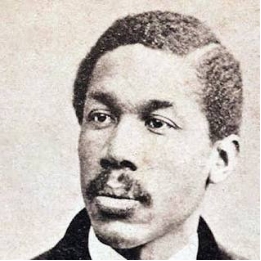
Octavius V. Catto |
Minutes
Our February meeting was our 463rd. The meeting had 4 in
person attendees and 11 registrants and
participants through Zoom.
Our speaker was Bryan Cheeseboro, a Civil War reenactor,
historian, and archivist. Mr. Cheeseboro spoke
on “Freedom in Action: The Life of Octavius
Catto.”
Octavius Valentine Catto was born a free African American
in South Carolina on February 22, 1839. In
1848, he and his family moved to Pennsylvania,
settling in Philadelphia. In 1854, Catto
enrolled at the Institute for Colored Youth,
where he graduated valedictorian in 1858. The
following year, he became an instructor at the
institute.
**
The Militia Acts of 1792 had generally barred African
Americans from serving in state militias and, in
effect, the U.S. Army. However, the Militia Act
of 1862 allowed them to serve in the army as
soldiers or manual laborers.
In June 1863, the Army of Northern Virginia invaded
Pennsylvania, and Philadelphia panicked. Catto
recruited 90-100 men at the institute, which
became a recruiting station. However, Major
General Darius Couch refused to accept them in
Harrisburg on the grounds that they were only an
emergency militia. On July 6, 1863, Catto
joined the Supervisory Committee for Recruiting
Colored Regiments. He also may have had an
impact on the creation of the famous “Come and
Join Us Brothers” recruiting poster. In recent
years, neo-Confederates have used the poster to
argue that sizable numbers of African Americans
served as soldiers in the Confederate army.
Numerous USCT regiments were organized at Camp William
Penn, near Philadelphia. By March 1865, 8612
USCT soldiers had been credited to Pennsylvania.
Catto taught English literature, advanced math, and
classical languages. He was a leading member of
the Banneker Literary Institute and the
Pennsylvania State Equal Rights League. He
joined the 5th Brigade of the Pennsylvania
National Guard–which included the 11th, 12th,
and 13th Regiments–and was given the rank of
major.
Caroline LeCount became Catto’s fiancÚ. LeCount was an
orator and poetry reader, and a student at the
institute. She played an active role in
desegregating streetcars in Philadelphia.
Catto was also captain, second baseman, and shortstop of
the Philadelphia Pythians Ball Club. The club
applied for entry into the Pennsylvania State
Convention of Baseball but was denied. In a
seven-game season in 1868, the Pythians won six
and tied one. In 1869, they played the white
Olympic Ball Club in what was probably the first
interracial baseball game in Philadelphia.
On October 10, 1871, an election day, Catto was killed by
Frank Kelly around 3:30 p.m., about a block from
his home at 814 South Street. Kelly was on the
run for six years, and was eventually acquitted
by an all-white jury. Catto’s funeral was the
biggest in Philadelphia since the assassination
of Abraham Lincoln. He was buried with full
military honors, and Caroline LeCount suffered
“uncontrollable grief.”
Mr. Cheeseboro concluded by asking: “Why is Catto not
remembered?” Among the possible reasons is that
he spent all his time in one place, never
leaving Philadelphia. On September 26, 2017,
the city dedicated a memorial to Catto.
**
Now known as Cheney University
|
|
Notes from the President
February is
almost over, and it seems like the year was just beginning. In
1863, people in Charleston, S.C. were paying $25.00 for a half
loaf of bread and $65.00 for a barrel of flour. Talk about
inflation! The United States government passed the first
Conscription Act in its history, nearly a year after the CSA.
We at the Baltimore Civil War Roundtable can’t draft members,
however, we encourage all of you to renew you member for 2023.
New recruits are very much welcome as well. Currently, we have
about 30 members. We’d like to, at least, double that amount.
Membership is $25 for individuals and $35 for families. This
year, we are offering a rate of $20 for students with ID and for
new members. See the form below.
After countless delays due to the pandemic and other factors,
the BCWRT will return to its Annual Banquet on Tuesday, April 25,
2023, 6 p.m. An Evening with General Meade will feature Dr. Andy
Waskie as Meade. We have experienced Dr. Waskie’s informative
and entertaining Zoom programs in the past. Finally, we get to
enjoy him in the flesh. See the banquet flyer for more
information. Our minimum required attendance is 50 people. We
still have a long way to go. Remember, if you purchased tickets
before April of 2020, your registration is still good and will
be honored.
Baltimore Civil War Roundtable
2023 Membership and Donation Form
Membership
$25 for Individual or $35 for Family
($20 for Students w/ID & First Time Members)
Please Print and Complete the Form. Make Your Check Payable to
BCWRT
Mail Form and Check to:
Ray Atkins, Treasurer, BCWRT
1204 Fordham Ct.,
Belair, MD
21014
NAME _______________________________________
ADDRESS____________________________________
CITY & STATE________________________________ Zip Code________
EMAIL________________________________
PHONE_________________________________
MEMBERSHIP AMOUNT__________________
DONATION AMOUNT_____________________
|
Meeting: January 24, 2023
|
Last
month, the Baltimore Civil War Roundtable focus
on the actions of Robert E. Lee’s Army of
Northern Virginia after the surrender at
Appomattox Court House (thanks to Dr. Caroline
Janney for her presentation of her book
Ends of War).
This month, our Zoom only meeting will delve
into General Lee, himself.
Thomas Lee Jessee,
perhaps the foremost Robert E. Lee living
historian and the man selected to portray
General Lee at the 150th anniversary of Lee’s
surrender to Grant at Appomattox Court House,
will present his program “The
Life of Robert E. Lee”. The
meeting will occur on Tuesday, January 24, 2023
at 7:30 p/m.
Thomas Lee Jessee is
a native Hamilton, Virginian the heart of
Mosby’s Rangers country. After moving to Florida
with his family, he joined a local re-enactment
unit in 1969 at the age of 18. He started out as
a private and over the years worked his way up
the ranks to general. He has attended
re-enactments of all major battles throughout
the U.S. as well as commanding troops at many of
the national events.
Thomas Lee Jessee is
currently the Commanding General of the
Confederate Forces for the annual reenactment of
the Battle of Olustee. Thomas is also an active
member of the Sons of Confederate Veterans. As a
longtime student of General Lee, Thomas has
portrayed General Lee in various venues
throughout the US. In 2015, he was approved by
the National Park Service to portray General
Robert E. Lee at the 150th Anniversary of
Appomattox reenactment in Virginia and for the
new Appomattox Visitors Center film shown to the
public daily. He recently appeared in the role
as General Lee on April 9-10, 2022, at the park.
He and his wife, Gail Rebecca, have been married
for 38 years and currently live in Lakeland, FL.
Professionally, he was an electrical
superintendent for a major electrical contractor
in Tampa; however, he retired in June of 2015.
Register for the meeting at:  https://us02web.zoom.us/.../tZwpde6vqzovHdMn837TxRgKRR2kX... https://us02web.zoom.us/.../tZwpde6vqzovHdMn837TxRgKRR2kX...
Once registered, you will receive an emailed
link to join the meeting.

Thomas Jessee as Genl. Lee |
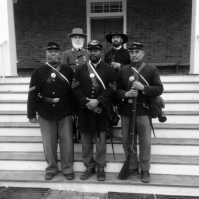
Thomas Jessee (Lee) Curt Fields (Grant)
w/USCT
(Including Robert Ford) at 150th Appomattox
|
Minutes
Our
January meeting was our 462nd. The meeting had
57 registrants and 46 participants.
Our
speaker was Thomas Lee Jessee. Impersonating
Robert E. Lee, Mr. Jessee discussed Lee’s life
and career. In 2015, Mr. Jessee was selected by
the National Park Service to portray Lee at the
150th anniversary commemoration of Lee’s
surrender to Ulysses S. Grant at Appomattox
Court House.
Robert
E. Lee was born on January 19, 1807, at
Stratford Hall Plantation in Virginia. His
father was Henry “Light-Horse Harry” Lee III, a
cavalry officer in the Revolutionary War and a
friend of George Washington. Lee grew up in
Alexandria and attended West Point, where his
classmates included Jefferson Davis and Albert
Sidney Johnston. Graduating second in his class
in 1829, and holding the rank of brevet second
lieutenant, he was given a choice of assignment
and decided to enter the Corps of Engineers.
As a
child, Lee met and became close with Mary
Custis, a great-granddaughter of Martha
Washington. Unusual for women at the time, Mary
was well versed in current events and could
speak and read Greek, Latin, and French. In
early 1831, Lee proposed to Mary and she
accepted. He also asked her father’s
permission. Mr.Custis first denied it but later
changed his mind and Lee married Mary on June
30, 1831. In later years, Mary suffered from
health problems, and by 1860 was practically an
invalid.
During
the antebellum years, Lee fought and
distinguished himself in the 1846-48 war with
Mexico, receiving three brevets. From 1848 to
1851, he lived in Baltimore, designing and
supervising the construction of Fort Carroll.
In 1852, he was ordered to West Point to be
superintendent. Lee became lieutenant colonel
of the 2nd U.S. Cavalry after then-Secretary of
War Jefferson Davis convinced the government to
create two cavalry regiments.
In 1857,
Mr. Custis died and Lee became executor of his
estate. This was a very difficult task. Some
property had to be sold to cover debt. The
estate also included nearly 200 slaves, all of
whom were to be freed in five years or when the
debts were covered. In 1862, Lee had documents
drawn up on all the slaves he could find, and
gave them their freedom. *
Lee was
in Texas when that state seceded, and was
ordered to return to Washington DC. Although
urged by Winfield Scott to remain loyal, he
decided he could not raise his sword against
Virginia. Originally Virginia voted to reject
secession, but reversed itself when Lincoln
called for 75,000 troops–including three militia
regiments from Virginia–to hold the Union
together following the firing on Fort Sumter.
Lee ultimately decided to resign from the U.S.
Army. Before Virginia joined the Confederacy,
he was appointed commander of all its forces.
Lee
began his service to the Confederacy as an
advisor to President Jefferson Davis. He went
to western Virginia and the south Atlantic
coast. In 1862, George McClellan and the Army
of the Potomac came within a few miles of
Richmond. After Joseph E. Johnston, leading the
Army of Virginia (later renamed the Army of
Northern Virginia), was wounded and put out of
action, Davis chose Lee to replace him. Lee led
the ANV for the remainder of the war.
Although
Lee told his three sons to make their own
decisions, all three–George Washington Custis
Lee, William Henry Fitzhugh “Rooney” Lee, and
Robert Edward “Rob” Lee Jr.--fought for the
Confederacy.
To Lee’s
relief, Grant was very generous at the surrender
at Appomattox. When Lee returned to Richmond,
he did so as a paroled prisoner. People came to
visit him day and night–but none offered him a
job. However, Lee was eventually offered a
position as president of Washington College. He
completely revised the curriculum so graduates
could earn a living. Lee was indicted for
treason after the war, but the charges were
dropped. President Andrew Johnson wanted Lee
and Davis tried and hanged for treason, but
Grant said no. By 1870, Lee began having
serious health issues, and he died on October 12
of that year. Following his death, Washington
College was renamed Washington and Lee
University. Lee and Traveller, his most famous
horse during the war, are buried there.
(*
President's Note- By court order, Lee was forced
to free the enslaved people on December 29,
1862)
|
Notes from the President
Happy New Year and Happy Lunar New Year.
We trust that things are looking well for all of you in the
Baltimore Civil War Roundtable Community. Our organization
begins the year with programming less affected by a pandemic.
Our January meeting is a Zoom presentation,
“The
Life of Robert E. Lee”
featuring Thomas Lee Jessee, perhaps the foremost Robert E. Lee
living historian who
portrayed General
Lee
at the 150th anniversary of Lee’s surrender to Grant at
Appomattox Court House The
meeting is January 24, 2023 at 7:30 p.m.
Register at: https://us02web.zoom.us/.../tZwpde6vqzovHdMn837TxRgKRR2kX...
Once registered, you will receive an emailed link to join the
meeting.
After countless delays due to the pandemic and other factors,
the BCWRT will return to its Annual Banquet on Tuesday, April 25,
2023 6 p.m.
An Evening with General Meade will
feature Dr. Andy Waskie as Meade. We have experienced Dr.
Waskie’s informative and entertaining Zoom programs in the past.
Finally, we get to enjoy him in the flesh. See the banquet flyer
for more information.
****Annual
Banquet April 25, 2023****
Will already have a full year of Hybrid and Zoom programs
planned. Please refer to our meeting calendar.
“Membership has its privileges” was
the old advertising slogan for American Express. Membership with
the Baltimore Civil War Roundtable gains you the opportunity to
experience the many authors, historians, living historians,
re-enactors and other presenters of Civil War activity.
Membership is $25 for individuals and $35 for families. This
year, we are offering a rate of $20 for students with ID and for
new members. See the form below.
Finally, and sadly, we announce the death of Mel Reid.
A former employee of the U.S. Forest Service, Mel retired from
the National Park Service where he was the Chief Equal
Opportunity Officer for the National Capital Region. An original
member of the 54th Massachusetts
Volunteer Infantry Regiment, Company B, Mel appeared in the
movie “Glory” and several Civil War related documentaries.
BCWRT members may remember his two presentations to our group.
His most recent was July 2021
presentation, entitled “From Plantation to Battlefield,” Mr.
Reid presented himself as a man who joined and fought in the
54th. He drew on the experiences of several real-life soldiers
to present the story of the character he impersonated. He made
that presentation while suffering from the cancer that caused
his demise.
|
|
|






















